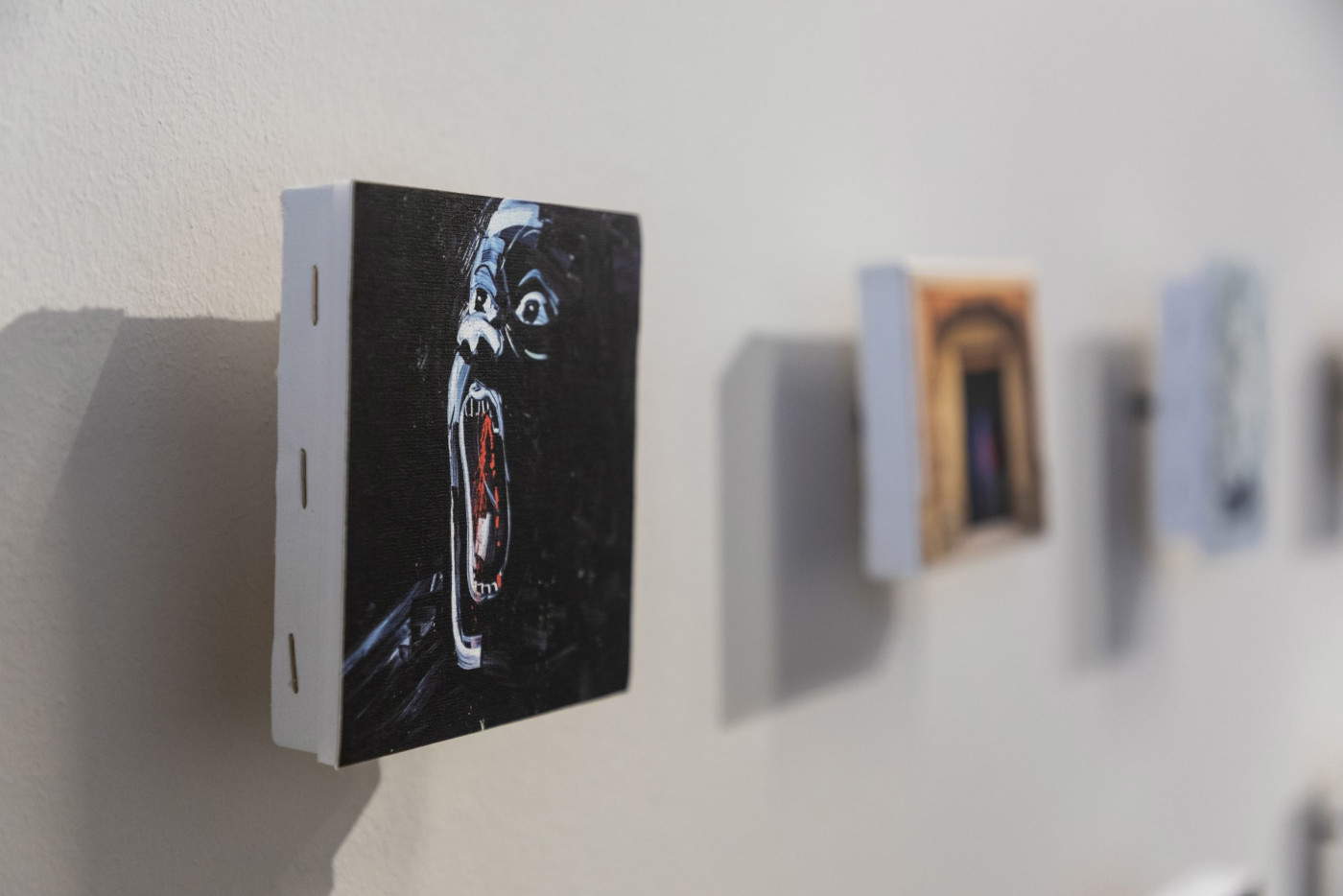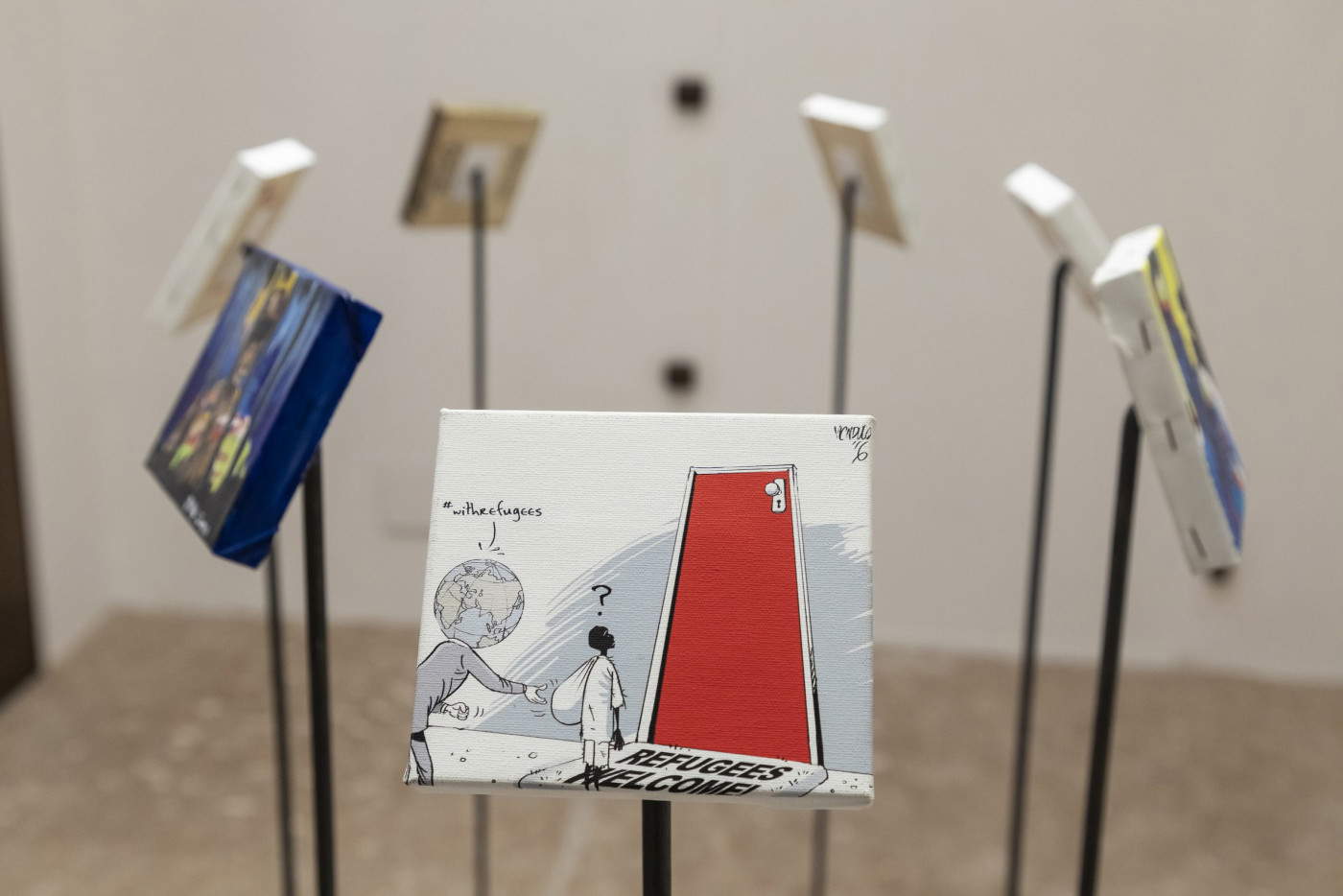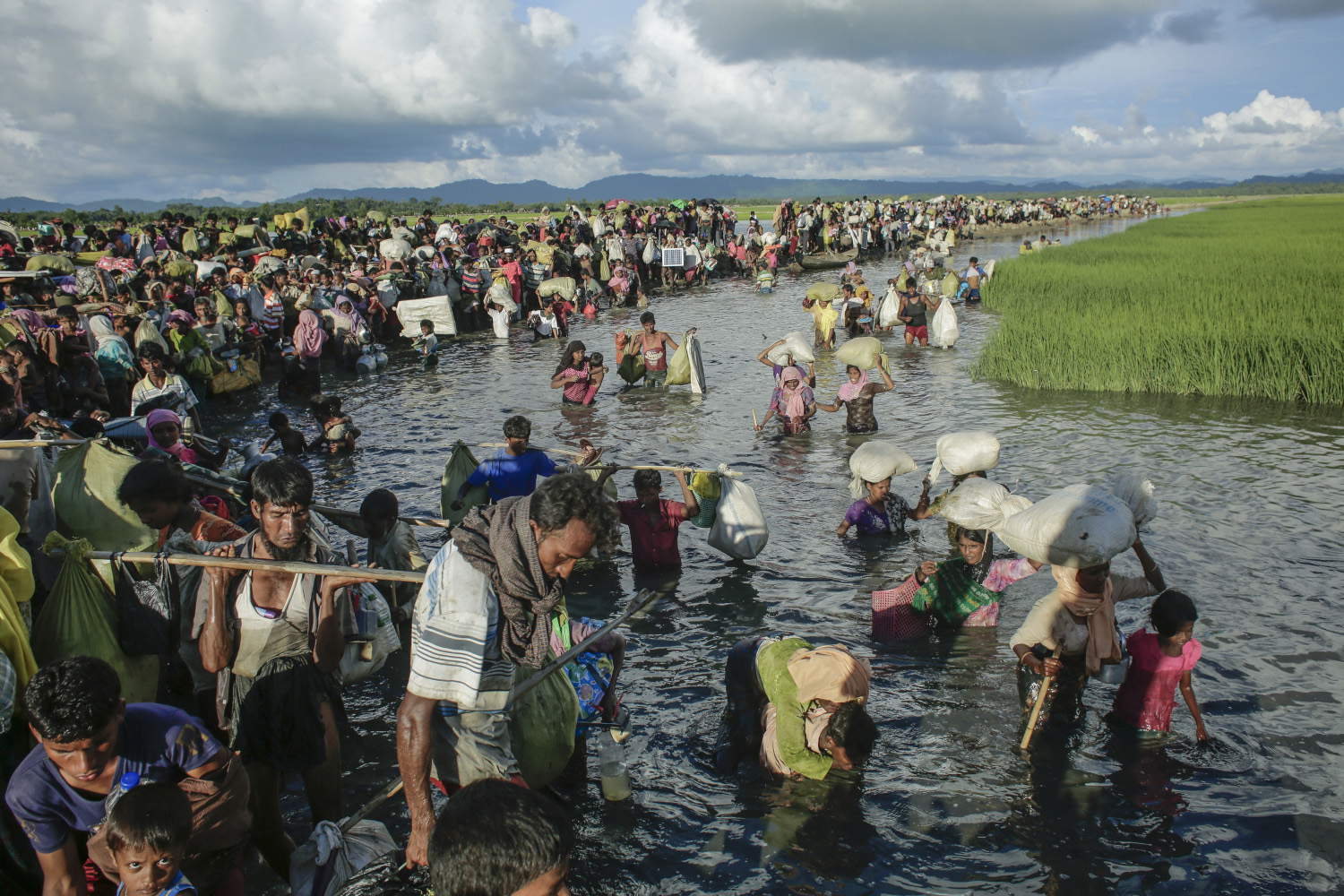From June 9 to July 31, 2025, OUT OF PLACE. Art and Narratives from Refugee Camps Around the World, an exhibition under the patronage of the United Nations High Commissioner for Refugees (UNHCR), comes to Padua: it will be hosted until June 30 in the Hanging Garden of Palazzo Moroni, then until July 31 in the Ancient Courtyard of Palazzo del Bo, home of the University of Padua. Already running from March 7 to July 14, 2024 at the Gallerie delle Prigioni in Treviso, the exhibition is sponsored by the Imago Mundi Foundation and aims to bring art and stories from refugee camps around the world to the public’s attention.
Curated by Claudio Scorretti, Irina Ungureanu and Aman Mojadidi, the exhibition is the result of research work conducted in eighteen of the largest refugee camps currently in existence. On display are the works and testimonies of 264 artists who live today, or have lived in the past, in these settlements. There are 284 works in the 10x12 cm format, complemented by photographs, videos, installations and documentary materials, aiming to broaden the view of the global refugee crisis.
After Kutupalong in Bangladesh, the exhibition explores the African continent through the voices collected in the camps of Dadaab and Kakuma in Kenya, Nakivale and Bidibidi in Uganda, Dzaleka in Malawi, Nyabiheke in Rwanda, and the settlement of Smara with the adjacent El Aaiun, Awserd, Boujdour and Dakhla in Algeria. The tour continues in the Middle East, touching on Za’atari camp in Jordan-the largest camp for Syrians-and five other camps for Palestinians: Baq’a, Hittin, Irbid, Madaba and Souf. In addition to these places, the exhibition also includes artists from other historical and geographical contexts: from Kurds and Yazidis, who share their people’s troubled histories, to 40 Afghan artists who left the country or remained there after the Taliban returned to power in 2021. A section is devoted to migration to Europe, particularly from Ukraine and through the Mediterranean routes, and to migration flows in South and Central America, with a look at the border between Mexico and the United States.

“Exiles, migrants, refugees, and stateless people, uprooted from their lands, are forced to come to terms with a new landscape,” said Edward Said, critic and writer, in his In the Sign of Exile, “and creativity, as indeed the profound unhappiness attributed to the manner of such misplaced subjects, constitutes in itself one of the experiences that have yet to find their own narrative.” It is from this definition that the title Out of Place draws its inspiration: the aim of the exhibition is to give voice to these artists, offering them a space for artistic expression and narrative, considering their current or past status as refugees as incidental in their biography as artists.
The narratives collected reveal how camps are not only temporary and fragile spaces, but how they often turn into stable communities, real cities born out of necessity. One emblematic example: in 2023, Kenya announced that the country’s two largest settlements - those of Dadaab and Kakuma - would integrate with local communities.
Reaching these places meant overcoming geographical, linguistic and administrative barriers. The exhibition is the result of collaboration with artists contacted directly in the camps and with the support of external collaborators, and documents the functionality and open and dynamic communication that characterizes the refugee camps presented in the exhibition.
Despite the difficulties, the fact that art continues to germinate in these contexts remains a surprising revelation. Painters, filmmakers, sculptors and photographers born or raised in the camps gather in small communities and, supported by humanitarian organizations, convey with their stories a message of resilience and confidence in the power of artistic expression.
The exhibition aims to chronicle this creative energy that arises in the so-called “cities of thorns,” echoing the title of Ben Rawlence ’s book dedicated to Dadaab. Art becomes a tool to transform a difficult reality into an opportunity for redemption. As director Aminah Rwimo, originally from the Kakuma camp, says: “I wanted to set an example and tell my fellow survivors that whatever has happened to us, yes it is part of our life. But it does not constitute the end of it.”
Alongside the small-format works, three installations were created especially for this exhibition. Kurdish artist Rushdi Anwar presents Reframe “Home” with Patterns of Displacement, a work made of juxtaposed carpet fragments that generate visual gaps and irregularities, evoking the instability and precariousness of refugee life. Palestinian street artist Laila Ajjawi created a canvas inspired by the murals she normally paints in refugee camps. Finally, Mohamed Keita, an Ivorian photographer who arrived in Rome at the age of 14 in 2007, offers a series of portraits accompanied by interviews by journalist Luca Attanasio, collected under the title The Labyrinth.
These latter works bring us back to a close dimension, recounting the condition of the refugee in Italy through images and voices that speak in the first person.


 |
| Treviso and Padua showcase the works and stories of artists from refugee camps around the world |
Warning: the translation into English of the original Italian article was created using automatic tools. We undertake to review all articles, but we do not guarantee the total absence of inaccuracies in the translation due to the program. You can find the original by clicking on the ITA button. If you find any mistake,please contact us.